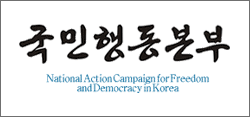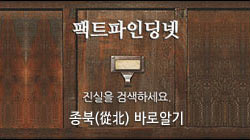*작년 기자가 사석에서 만났던, 한국군의 對北 정보부서에서 오래 근무했던 한 장성은 이런 秘策을 털어놓았다.
'가장 효과적인 전쟁억제책은 김정일을 표적으로 관리하는 것이다. 그를 전략의 무게중심(center of gravity)으로 놓아야 한다. 만약 한국에 대한 도발을 한다든지, 아웅산 테러 같은 국가 지도부 암살을 기도한다든지 하면 우리도 김정일의 목숨을 노리겠다는 것을 알려주고 실제로 그럴 수 있는 수단을 확보하고 훈련하면 분명히 그자의 태도가 달라질 것이다. 독재자는 제 목숨 귀한 줄밖에 모르기 때문이다.'
오늘 뉴욕 타임즈 기사는 미국 국방당국자들도 비슷한 생각을 하고 있다고 전했다. 미군 당국은 지난 2월 중순부터 4월 초순까지 김정일이 약50일간 보이지 않았던 이유는 그가 미군의 폭격을 두려워하여 은신처에 가 있었기 때문이라고 판단하고 있다는 것이다. 이때 미군은 24대의 B-1, B-52 폭격기를 괌에 배치하여 북한을 작전 반경안에 두고 있었다. B-1폭격기는 특히 레이다망의 추적을 피할 수 있는 스텔스 기능을 가진 폭격기로서 북한의 방공망을 빠져나갈 수 있다.
미군 당국은 김정일의 생명을 위협할 수 있는 장비와 병력을 근접 배치하여 놓음으로써 그의 행태에 어떤 영향을 줄 것인가를 연구하고 있다고 한다. 김정일이 계속해서 깡패 같은 짓을 하면 후세인처럼 자신의 은신처가 정밀폭격의 대상이 된다는 것을 알도록 하겠다는 이야기이다. 1986년에 레이건 정부는 리비아의 카다피 숙소를 폭격한 적이 있다. 그 뒤 카다피의 행동이 얌전해졌다.
미군이 김정일을 표적 제1호로 놓고 전략을 짜게 되면 對北 전략의 그림도 바뀌어질 수 있다. 보병사단 중심의 방어전보다는 정밀폭격 중심의 기동력을 중시하고 여기에다가 정보기능을 덧붙이면 독재자를 벌벌 떨게 하고 북한의 공갈과 위협을 대폭 감소시킬 수 있다는 것이다. 황장엽 선생의 말대로 북한체제에서 결정을 내릴 수 있는 인물은 김정일 하나뿐이므로 그로 하여금 자신의 행동에 따른 대가를 심각하게 생각하게 해야 한다는 것이다.
이하는 뉴욕 타임즈의 관련 기사 全文이다.
Lessons From Iraq Include How to Scare North Korean Leader
By THOM SHANKER
\ASHINGTON, May 11 — American intelligence officials have concluded that the North Korean leader, Kim Jong Il, went into seclusion during the final buildup to the war in Iraq because he feared that he too might be the target of attack. That judgment has led the Pentagon to consider new ways to hold him and his inner circle at risk as a way of bolstering deterrence on the peninsula, officials say.
Mr. Kim vanished from public view for 50 days starting in mid-February, a time when the Pentagon also moved bombers into the Korean area of operations. Now, the military's ability to mount precision attacks on leadership targets in Iraq is being examined to see how it might apply in a tense standoff with North Korea, perhaps influencing North Korea's behavior without ever firing a shot.
A senior Defense Department official said that lessons from the attacks against Saddam Hussein of Iraq, including short-notice air strikes on suspected hideouts in the opening and closing days of the war, are shaping discussions of how best to re-arrange the American military presence in South Korea and nearby in the Pacific.
The goal would be to assemble in the Korean region the same kind of detailed intelligence on high-priority targets — including the location of the adversary's leadership — and the ability to strike almost instantaneously with precision weapons should the need arise.
'Truly, if I'm Kim Jong Il, I wake up tomorrow morning and I'm thinking, `Have the Americans arrayed themselves on the peninsula now, post-Iraq, the way they arrayed themselves in Iraq, rather than the way they were pre-Iraq?' ' the senior Defense Department official said.
'And the idea is to make the North Koreans realize that we are arrayed, we are deployed, we are committed in Korea with the types of resources and types of capabilities that we brought to Iraq,' he added. 'And we think that doing that will make our deterrence there much more credible and much stronger.'
No changes in American forces deployed to the region have been decided yet, the official cautioned, and the process could take two or three years or more.
Advancements in military technology may even allow increased deterrence with fewer American troops on South Korean soil, just as the American military fought this year in Iraq with a smaller force than it used in the Persian Gulf war in 1991.
'We are committed to bringing the same improvements in military war-fighting capability to Korea that we brought to Iraq this time,' the senior Defense Department official said.
South Korea's new president, Roh Moo Hyun, arrived in the United States today, at a time when the two nations have been discussing a number of changes in their military relationship, from the structure of the United States-South Korean command framework and the proximity of American forces to major South Korean cities to, eventually perhaps, significant decreases in American forces in South Korea.
In the nearer term, the senior Defense Department official said, potential changes could lead to increased intelligence and reconnaissance deployed in or near South Korea so that they could surge to the front. With those increased surveillance capabilities, 'whatever forces we have there are exponentially much more effective, because you can use precision targeting much more aggressively and much more quickly,' the official said.
While American intelligence officials concede that it is impossible to know for certain what motivated the North Korean leader's unusual and lengthy seclusion, a consensus has emerged that it most likely was his fear of an attack, according to administration, military and intelligence officials.
Mr. Kim vanished after he welcomed a Russian delegation on Feb. 12, and reappeared only on April 3, choosing a ceremony at a military surgeons' school for his highly symbolic return to public view, according to American intelligence officials.
This was a remarkably long absence from public life, especially since state-run North Korean news organizations normally track Mr. Kim's activities on a daily basis, intelligence officials said.
'There was widespread speculation, both in South Korea and in the U.S., that Kim Jong Il was very concerned that he might be next,' said a senior American intelligence official. 'There is a good chance that there was some concern on his side, and he decided to lay low.'
Mr. Kim's departure from public view coincided with the final stages of the American military build-up to war with Iraq.
During that same period, 24 long-range B-1 and B-52 bombers moved from bases in the United States to Guam, within easier striking distance of North Korea, to strengthen American power in the region as large numbers of troops and weapons normally assigned to the Pacific rotated toward Iraq.
Equally significant in that period was the arrival of several F-117 Stealth fighters in South Korea from American bases for a combined military exercise.
Those fighters, which American military officials confirm have remained in South Korea even though the exercise is over, are designed for quick strikes against targets ringed by heavy air defenses. They are the same kind of radar-evading aircraft that opened the war with Iraq by attacking a command bunker in Baghdad on a mission intended to kill Mr. Hussein and his sons. 'Clearly our willingness to attack leadership targets from the get-go has probably made Kim a lot more apprehensive,' said one senior administration official.
Pentagon officials said that Mr. Kim's military carefully studied American war-fighting techniques in the 1991 gulf war, and 'we saw adjustments in the way they did things after that, especially in the areas of camouflage and concealment,' according to one Defense Department official. 'I suspect they are doing that again.'
Mr. Kim's decision to stay out of public view 'may be one of those adjustments,' the official added.
Since re-emerging, Mr. Kim has mostly visited military units, including a naval weapons factory late last week, according to American intelligence officials.













 뉴욕 타임즈
뉴욕 타임즈







 트위터
트위터 페이스북
페이스북 네이버
네이버



























